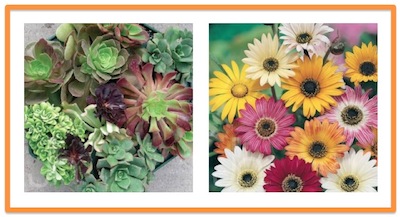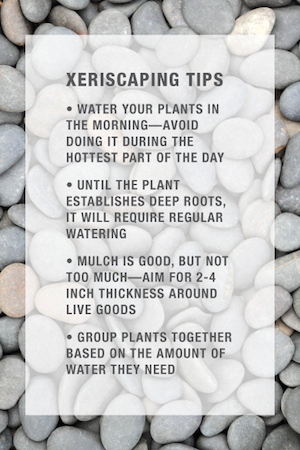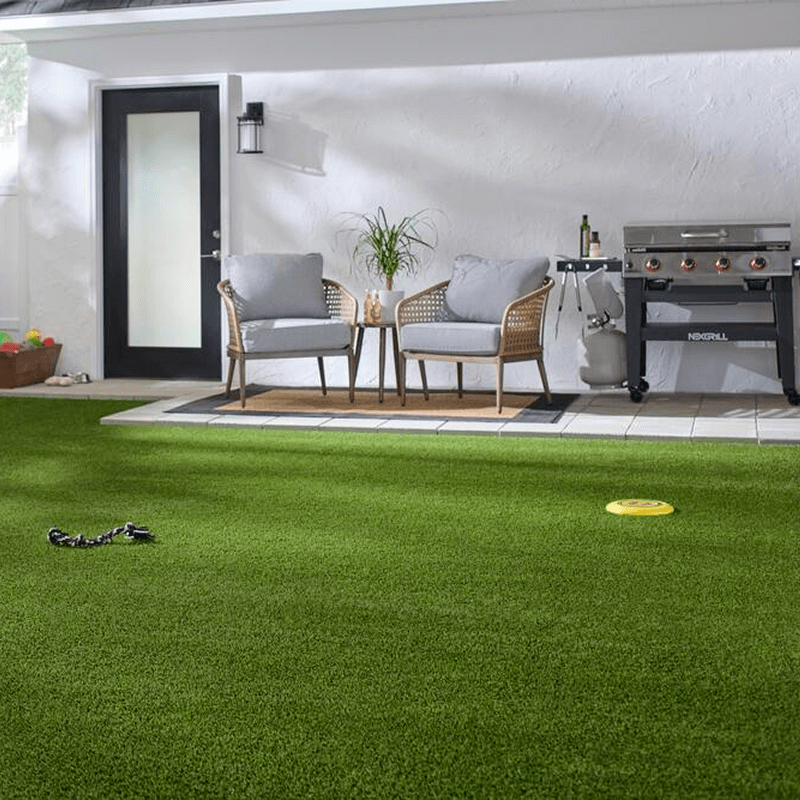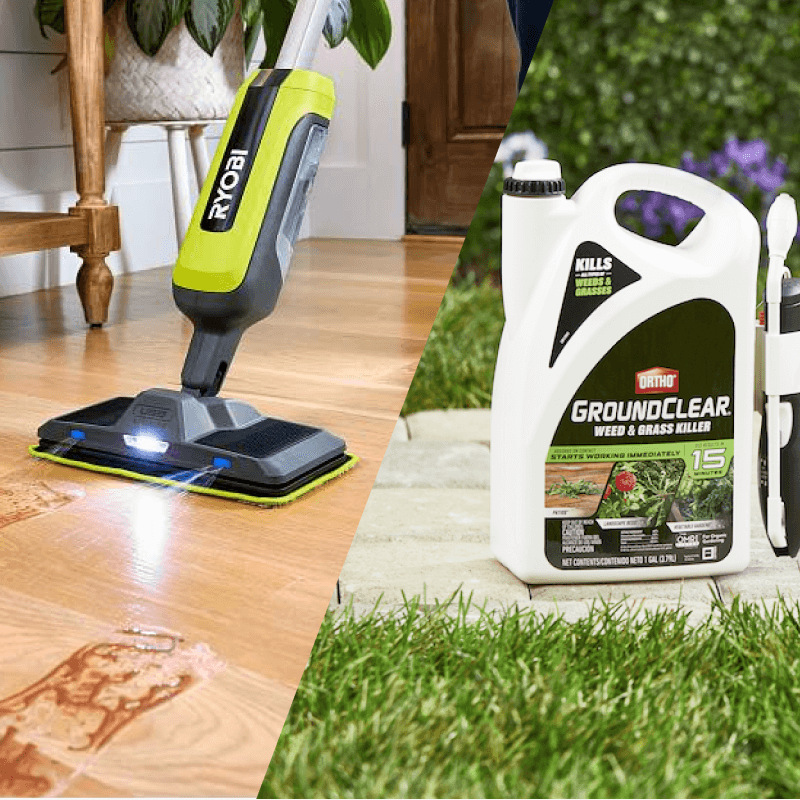In many parts of the U.S.—especially in the West and Southwest— severe drought has put an emphasis on water conservation. Xeriscape (pronounced “zeri-scape”) is a water-efficient landscaping method growing in popularity as homeowners look to limit daily water usage with alternative landscaping materials and techniques. With xeriscaping, yards can become environmentally friendly and still be impeccably well designed with native plants and landscapes that require little to no water.
Here are a few things to keep in mind for planning the perfectly xeriscaped yard.
1. Pick the Right Plants
It may seem obvious, but it’s crucial to choose plants that don’t require a lot of water. Succulents are a
great solution that don’t need a lot of water and are easy to grow. Aeonium, a succulent shrub, is a good option for rocky areas. If you’re looking for something other than succulents, African Daisies thrive in the sun and come in a mix of hues.
Another key factor is finding plants that are native to the region, especially for areas that consistently face dry conditions. These plants will have an easier time surviving since they are naturally equipped to handle the environment.
2. Soil Prep is Key
Finding the right mix of soil can be tricky, but necessary. Especially in a dry climate, the soil needs to be able to hold the small amount of moisture and nutrients available for the plant. The Home Depot has soil testing kits that can help you determine the pH of the area. From there, you can find out what you need to alter, or identify what mixes you need for the soil. Mulch can also be helpful for retaining moisture and preventing weed growth. New online tools can help you find the right amount of mulch you need for your space.
It’s also important to take note of unleveled areas of the yard. These can affect water drainage and might increase evaporation, keeping certain plants from receiving water. You may need to decrease the slope, or reconsider where you place certain plants.
 3. Watering and Irrigating
3. Watering and Irrigating
Determine the best irrigation plan for your plants. Drought-tolerant plants often need a lot of water in the beginning, but once they’ve established deep roots, require very little water. Irrigation systems are sometimes the most efficient way to give the plants the water they need. By supplying water directly to the base of the plant, there’s less opportunity for the water to evaporate and be wasted.
Home automation allows you to customize your irrigation system—even while away on vacation—helping to decrease water waste. As more and more homeowners want to increase yard efficiency, this smart gardening trend is on the rise, and new outdoor tools are becoming available. For example, the Rachio Smart Irrigation Controller is all about intelligent water use through an irrigation system that enables you to control it from anywhere – helping to reduce water use by more than 20 percent. The Smart Robotic Sprinkler by Droplet is another great tool that assesses local weather and adapts watering times and amount based on real-time information.
4. Rocks Add Design and Texture
While succulent gardens and soil can play a big role in your xeriscaped yard, there are also ways to use non-living outdoor materials to add a unique design dynamic. Hardscaping elements, such as stones, pavers and pebbles, allow you to get creative with different patterns and colors while keeping out weeds and protecting soil from high temperatures. Landscape additions like marble chips and pea gravel come in a variety of shapes and sizes—ready for you to mix and match.
Xeriscaping has a lot of benefits: You can save time, money and water by gardening in a way that requires less water and fewer resources. And, it’s not just for water-thirsty yards. Homeowners who lack a green thumb or want a low-maintenance yard can take advantage of xeriscaping options. Pick out your favorite drought-tolerant plants and pebbles, and start making a plan for your new, low-maintenance yard.






